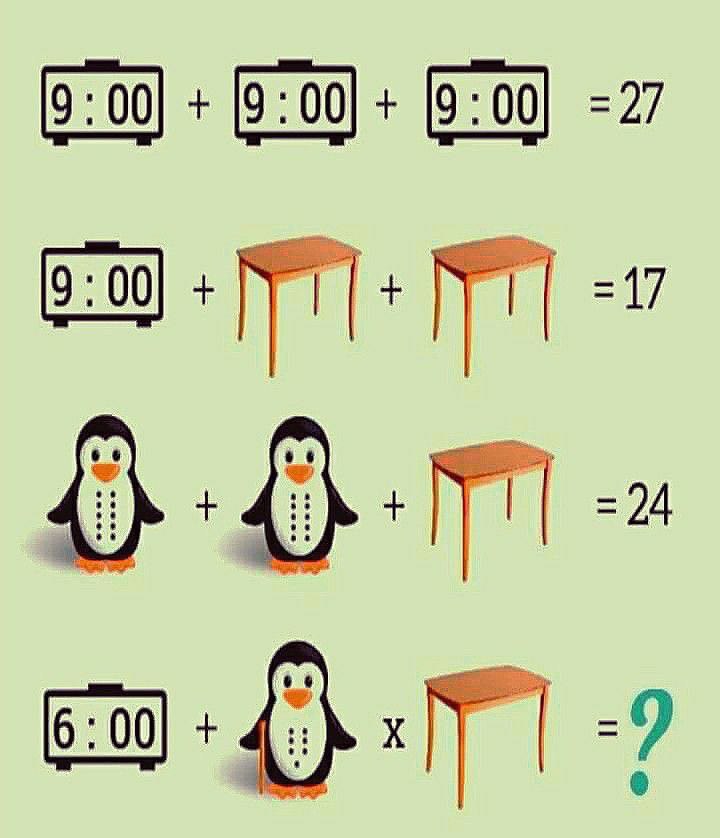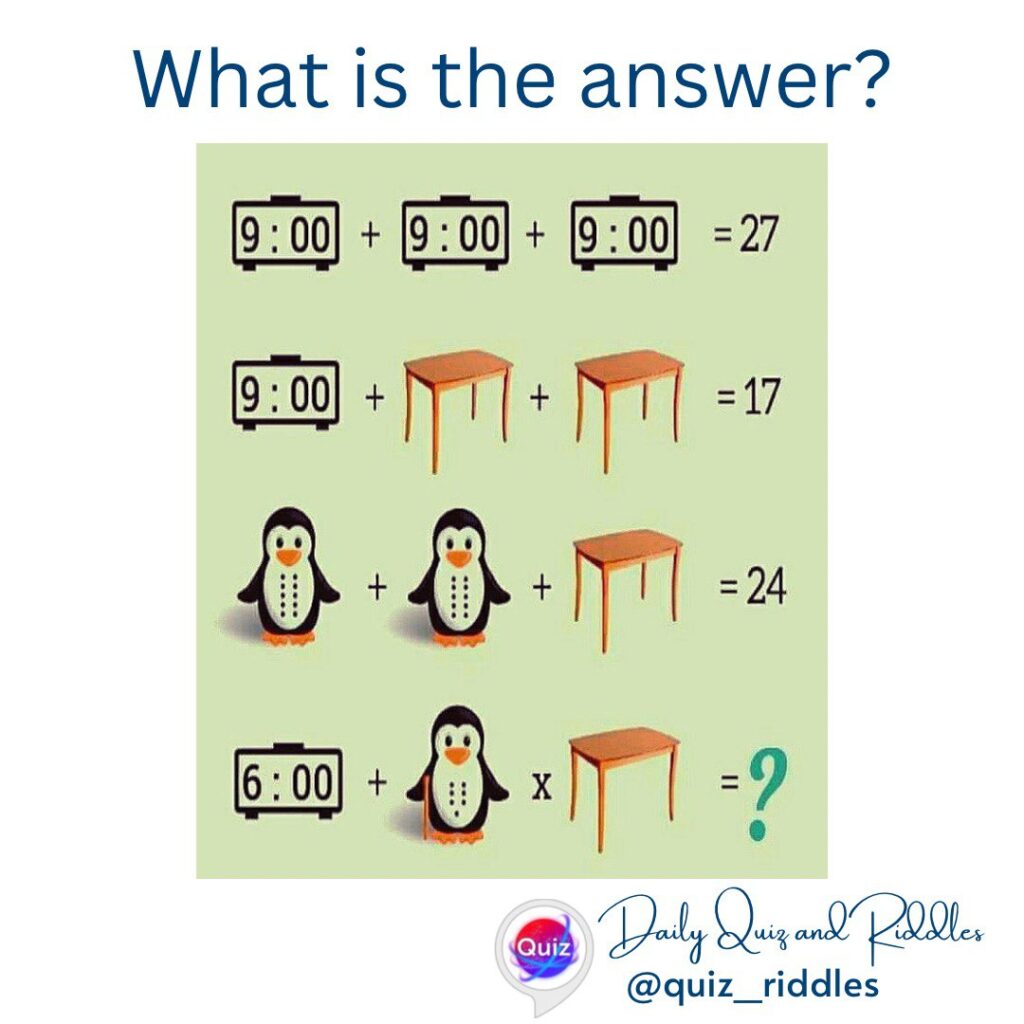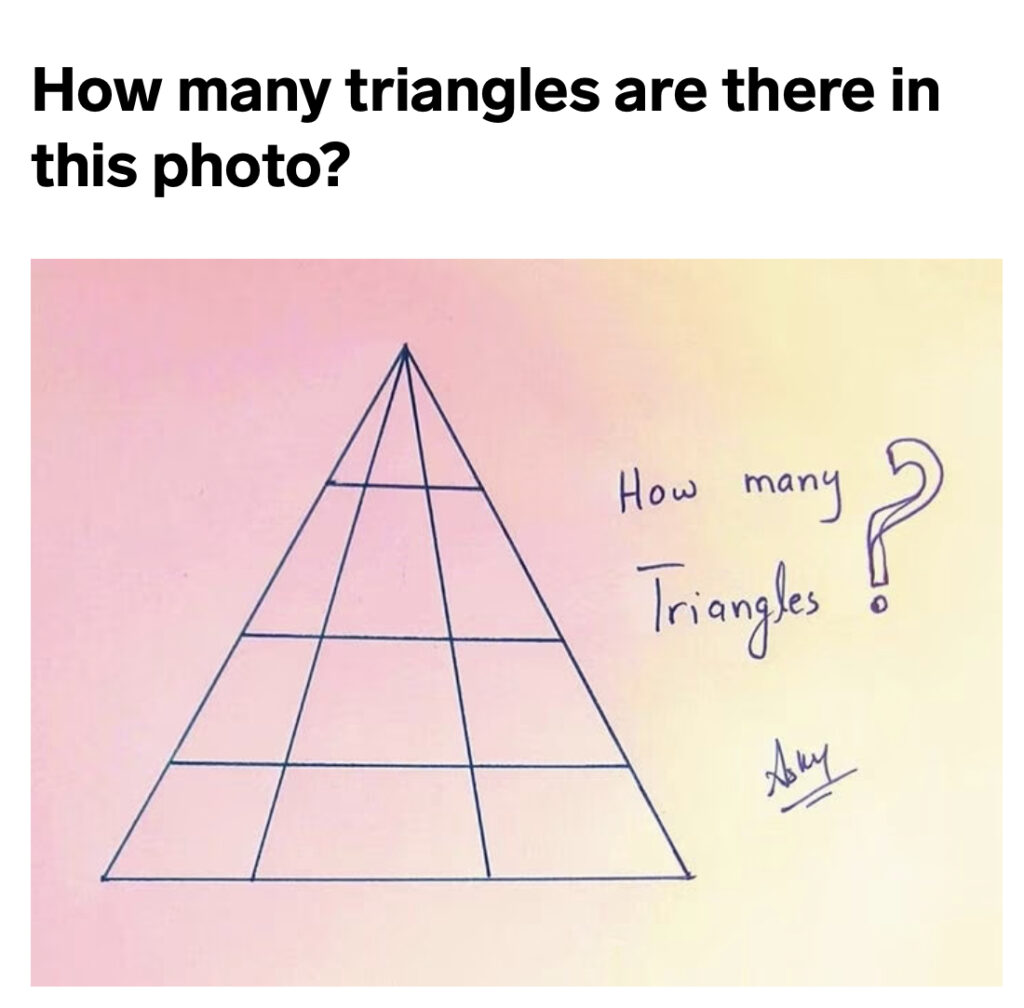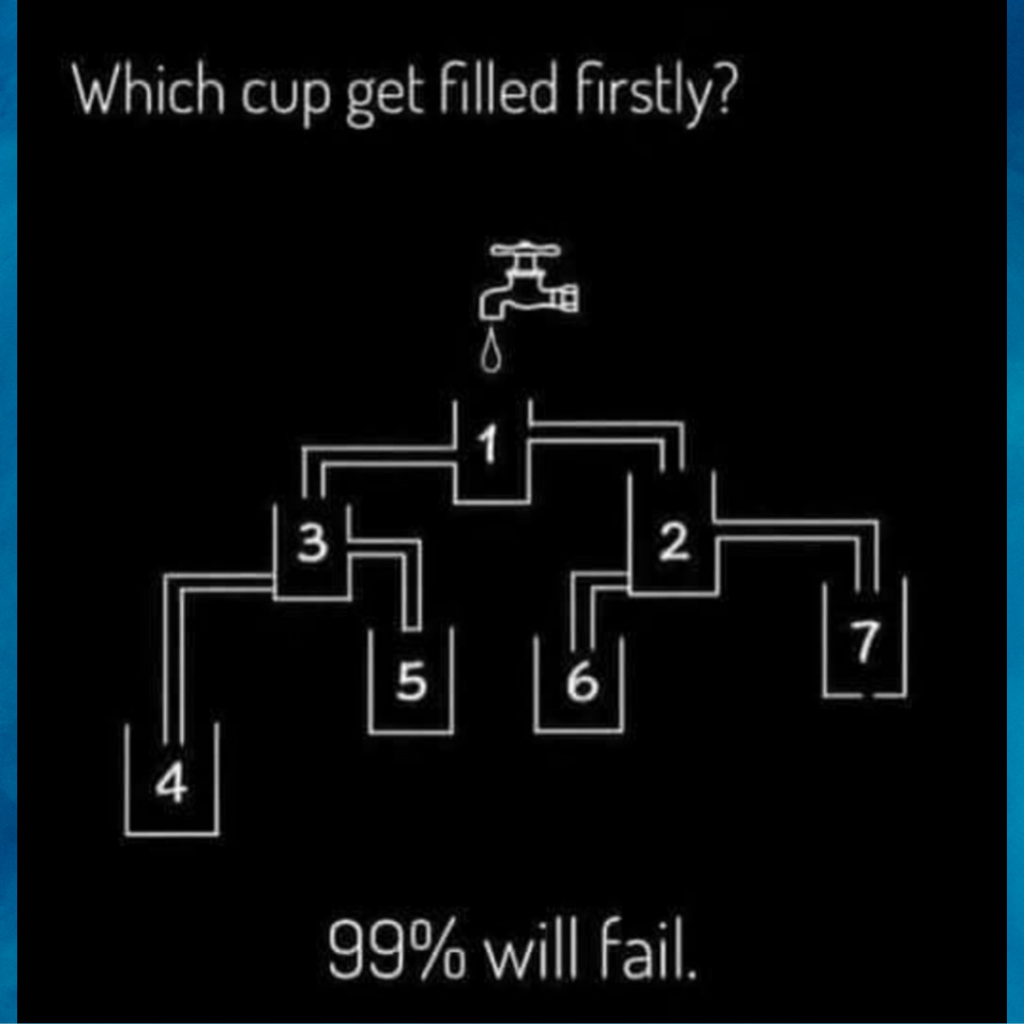Introduction:
Math puzzles can be a fun brain workout, and every now and then, one comes along that not only challenges our numerical skills but also our attention to detail. This particular puzzle is making the rounds on the internet, and while it seems straightforward at first glance, it has a twist that’s tripping up even the sharpest minds. With various answers from 27 to 30, 38, 46, 60, and so on. Let’s zero in on the puzzle that’s causing such a stir and dissect where those hidden tricks lie.

The Clock’s Ticking Trick:
At the top of the puzzle, three clocks read 9:00, adding up to 27. The catch? The value of each clock is the number shown on its face—so each clock is indeed valued at 9.

Tables Turn with Legs:
Next, a clock and two tables total 17. If we’ve already cracked that a clock showing 9:00 equals 9, then each table must be 4, right? The trick’s in the legs – a table’s value equals the number of legs it has.

Penguin Parade Puzzle:
Then we see two penguins plus a table summing to 24. Each penguin is adorned with 10 dots, making them a perfect 10 each. The lesson here is in the dots; the value is literally on the penguin.

The Final Showdown:
But here comes the curveball. The last equation gives us a 6:00 clock, a penguin, and a table to add and multiply. The trick? The clock now shows 6:00, changing its value to 6. The table, missing a leg, stands on 3. The penguin, crafty creature, not only sports 7 dots but it is also holding a table leg!

This means that the total value of penguin and table leg = (7+1), so, our final equation becomes 6+(7+1)*3.
Yes, we’re not simply adding and multiplying numbers; we’re combining keen observation with basic math. The final tally?
Following BODMAS (or PEMDAS), we get 6+(7+1)*3 = 6+ 8*3 = 6+24 = 30. Hence 30 is the correct answer!
FAQs:
- What is BODMAS (or PEMDAS)?
- BODMAS and PEMDAS are acronyms to help remember the order of operations in math problems. BODMAS stands for Brackets, Orders (powers and square roots, etc.), Division and Multiplication (from left to right), Addition and Subtraction (from left to right). It’s commonly used in the UK and some other countries. PEMDAS is the American version, standing for Parentheses, Exponents, Multiplication and Division (from left to right), Addition and Subtraction (from left to right). Both acronyms are meant to ensure that arithmetic problems are solved in the correct order to get the right answer.
- Why do the values of the items in the puzzle change?
- They change because the puzzle is designed to test not only your math skills but also your observation and attention to detail. Each item’s value depends on a specific characteristic that can vary from one line to the next.
- How can I get better at these kinds of puzzles?
- Practice makes perfect! Engage with different types of puzzles, and pay close attention to the details. Looking for patterns and changes before starting your calculations is also a great strategy.



